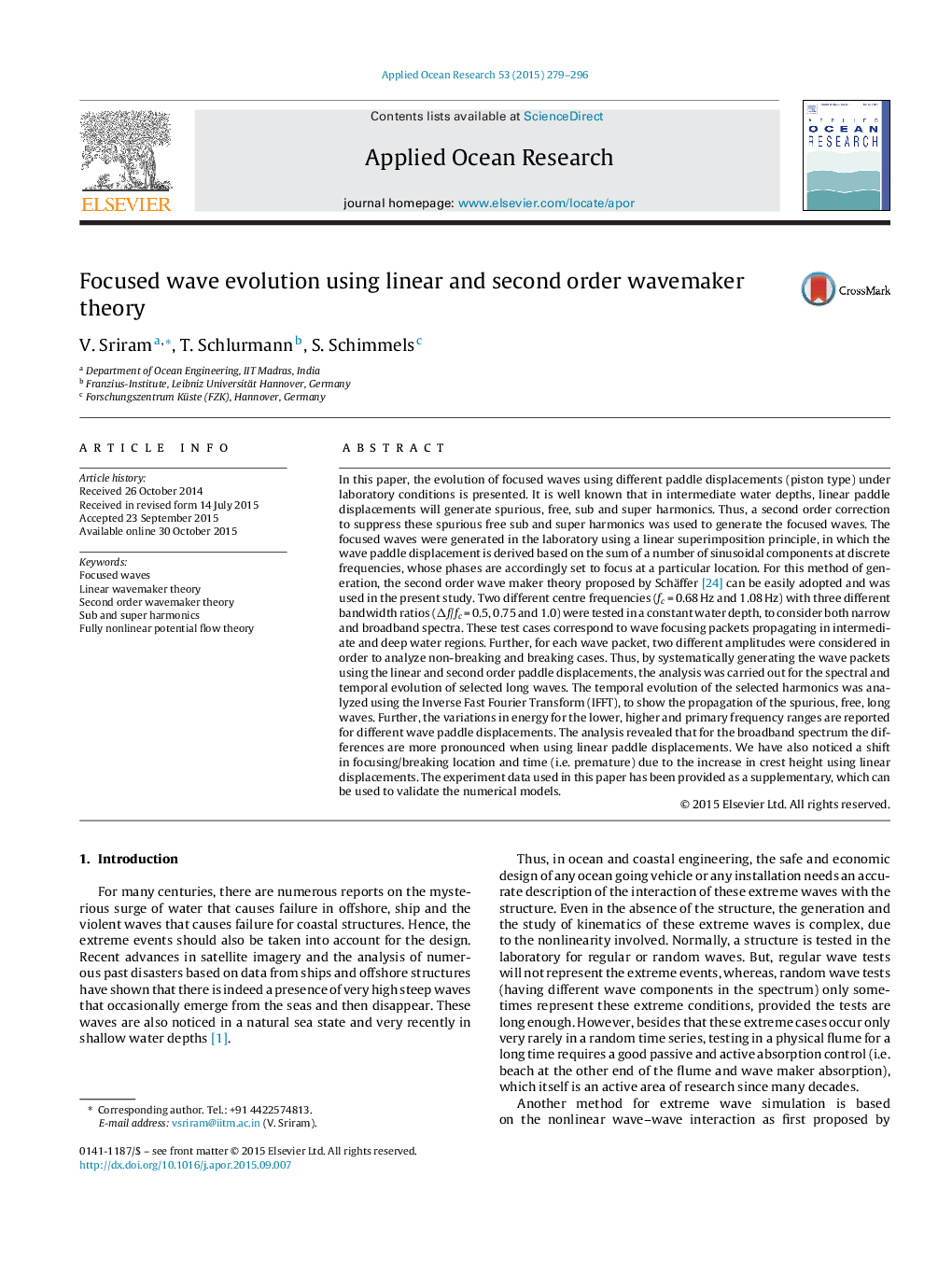| Article ID | Journal | Published Year | Pages | File Type |
|---|---|---|---|---|
| 1719921 | Applied Ocean Research | 2015 | 18 Pages |
•The evolutions of wave focusing using linear and second order paddle motions are discussed.•Evolution of the spurious and bound long components is shown in time domain.•10% difference in energy loss for broadband spectra in intermediate water depths using 2nd order paddle displacement.
In this paper, the evolution of focused waves using different paddle displacements (piston type) under laboratory conditions is presented. It is well known that in intermediate water depths, linear paddle displacements will generate spurious, free, sub and super harmonics. Thus, a second order correction to suppress these spurious free sub and super harmonics was used to generate the focused waves. The focused waves were generated in the laboratory using a linear superimposition principle, in which the wave paddle displacement is derived based on the sum of a number of sinusoidal components at discrete frequencies, whose phases are accordingly set to focus at a particular location. For this method of generation, the second order wave maker theory proposed by Schäffer [24] can be easily adopted and was used in the present study. Two different centre frequencies (fc = 0.68 Hz and 1.08 Hz) with three different bandwidth ratios (Δf/fc = 0.5, 0.75 and 1.0) were tested in a constant water depth, to consider both narrow and broadband spectra. These test cases correspond to wave focusing packets propagating in intermediate and deep water regions. Further, for each wave packet, two different amplitudes were considered in order to analyze non-breaking and breaking cases. Thus, by systematically generating the wave packets using the linear and second order paddle displacements, the analysis was carried out for the spectral and temporal evolution of selected long waves. The temporal evolution of the selected harmonics was analyzed using the Inverse Fast Fourier Transform (IFFT), to show the propagation of the spurious, free, long waves. Further, the variations in energy for the lower, higher and primary frequency ranges are reported for different wave paddle displacements. The analysis revealed that for the broadband spectrum the differences are more pronounced when using linear paddle displacements. We have also noticed a shift in focusing/breaking location and time (i.e. premature) due to the increase in crest height using linear displacements. The experiment data used in this paper has been provided as a supplementary, which can be used to validate the numerical models.
